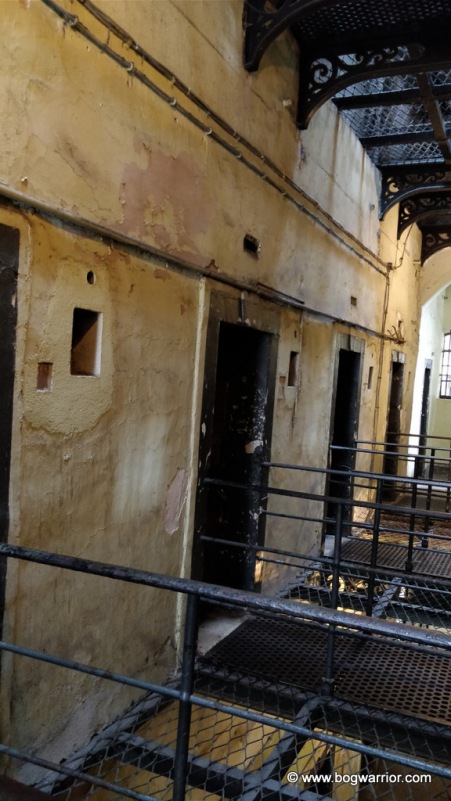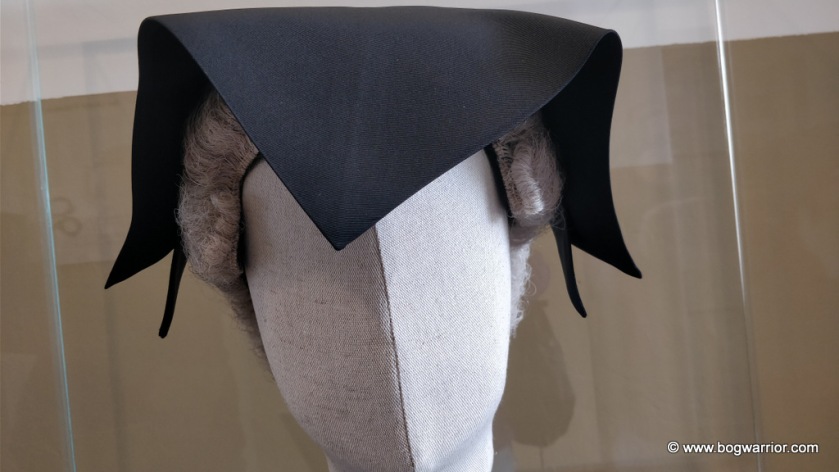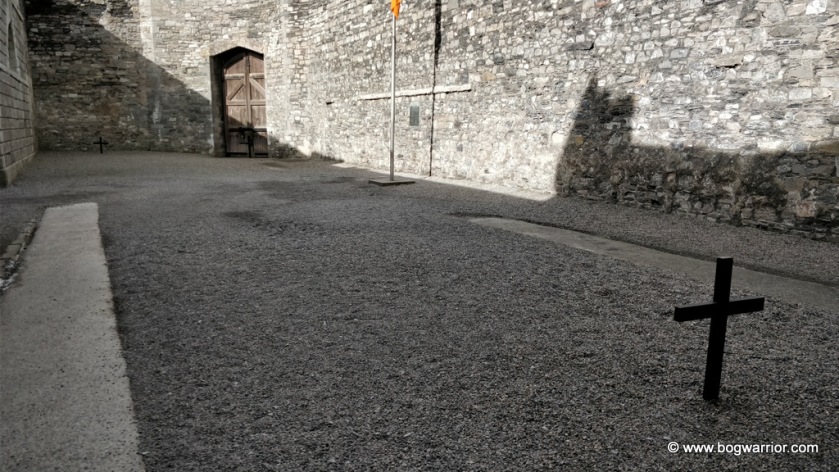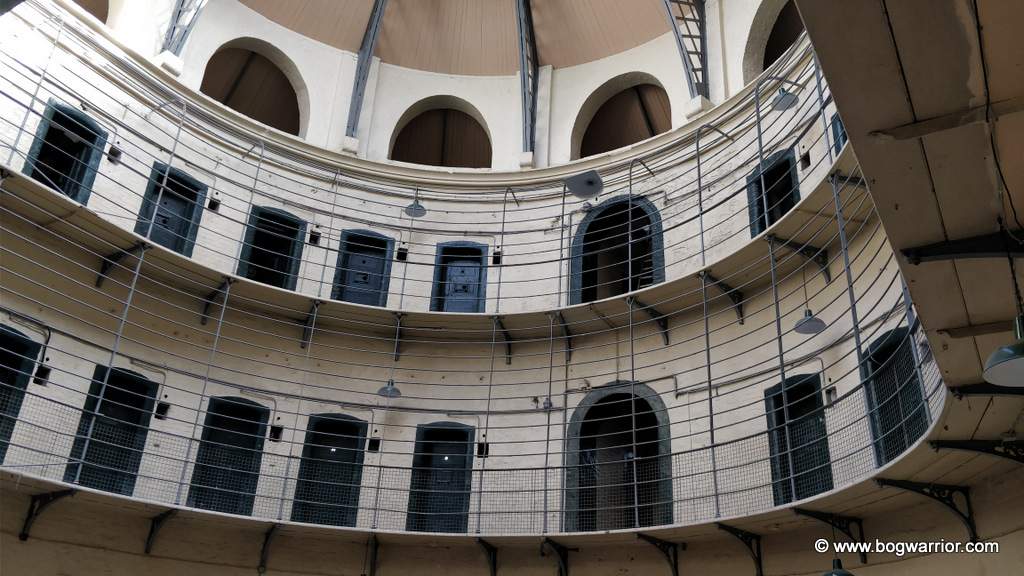Kilmainham Gaol has been on my “to visit” list for a while. Finally, I got around to visiting it in March 2018. And boy, was it worth it. And yes, they let me out when the tour was over 🙂
A Little Bit of History
Kilmainham Gaol opened in 1796, built on top of the cheerily named Gallows Hill. There had been an older prison nearby before this and, as the hill’s name suggests, a history of executions in the area. To really add to the general misery of the place, the prison itself was built from a local limestone known as calp. A stone that was good at being damp and poor at retaining heat. And if that wasn’t bad enough, there was no glass in the little windows running along the corridors. Ah yes, they don’t make prisons like they used to do.

In the first half of the 19th century, deporting convicts to prison colonies in Australia was still a common occurrence. The prison became the holding place for over 4,000 convicts before they were sent on their long, one-way trip Down Under. Life was scarcely better for the people they’d left behind. Overcrowding had been a problem in the prison anyway but once the Great Famine began in the mid-1840s, it escalated. In those times, one could be jailed for misdemeanours as trivial as begging and stealing food. Needless to say, the prison became very overcrowded during those years. Often people deliberately got themselves arrested so they could go to prison. It might have been miserable in there but at least they’d be fed. The cells which were designed to house just one person became home to four or five people. Women and children slept on the chilly corridors outside. The food wasn’t all that great either and as time went on, the miserly rations were reduced to deter people from going to prison in order to to be fed. Still, it was still a hell of a lot better than what they would have received outside.
In Ireland, the prison is most associated with its role in the struggle for Irish independence. Or perhaps more accurately, for the number of “big names” from Irish nationalism who were imprisoned there. Indeed, there are death masks for Wolfe Tone and Robert Emmett in the prison’s museum. The prison mostly closed in 1910 but found itself unexpectedly brought back into use in 1916 in the aftermath of the Easter Rising.
Hundreds of participants from the Easter Rising were imprisoned here. And in a move which was to change Irish history forever, 14 of the leaders of the Rising were hastily tried and sentenced to death. Over the course of a few days, they were executed by firing squad in the Stonebreaker’s Yard. The executions helped turn public opinion firmly against the British and triggered a series of events which led to Irish independence.

The prison finally closed in 1924 and over the years, fell into disrepair. With the unhappy role it had played in Irish history, it’s understandable why it was left to rot. Thankfully, that all changed in 1960 when volunteers began to restore the prison. It was reopened in 1966 (the 50th anniversary of the Easter Rising). Ironically, the opening ceremony was performed by Eamonn DeValera. In 1924 he had been the final prisoner to be released from the prison; 42 years later he was President of Ireland. It was finally handed over to the Irish state 1986 and is now run by the Office of Public Works.
Since 2016, Kilmainham Courthouse which is right beside the prison has been part of the complex. As well as being a good place for visitors to wait for their guided tour to begin, it is an interesting place in its own right. I found the courtroom, with its maze of seats and partitions, to be a sobering enough place in its own right. And that was before I spotted a replica of a judge’s black cap in a glass case next door. What a terrifying spectacle that must have been for the condemned man/woman to see.
The tour of the prison is by guided tour only. Anyone I know who has done these guided tours has had nothing but good things to say about the tour guides. I can’t disagree – the man who took our tour group around was excellent and managed to make the tour both informative and entertaining.

Even though nobody has been held in Kilmainham Gaol for almost a century, it’s still not much of a reach to imagine what life must have been like in there. Although the prison building itself is more comfortable than it was back in the day, it’s still from 5-star accommodation. It was striking how chilly the corridors in the oldest part of the prison were, even though it has since been somewhat insulated. I for one was thankful that I was wearing warm, modern day clothing and didn’t have to sleep on a stone floor with little more than straw bedding. At least it was only the cold that was a tangible reminder of yesteryear – the stench from the overcrowded cells won’t be for sale as an air freshener in the prison shop any time soon.
Surprisingly, not all the rooms in the old part of the prison were stinking, overcrowded, chilly hellholes. We were brought into a reasonably large room which had once been occupied by the Irish MP Charles Stuart Parnell. He may not have enjoyed his stay in prison but it was definitely made more comfortable by the coal fire burning in the grate (coal paid for by him), the library across the hallway and being served the same food as the prison governor.
The best-known part of the prison is the East Wing. Completed in 1862, it was designed so that prison wardens would be able to keep an eye on a large number of prison cells at the same time. Not that it mattered because nobody ever escaped from Kilmainham Gaol without help from others. This part of the prison is stunning and it’s possible to walk into quite a few of the cells here. Film fans might recognise it from the likes of The Italian Job, Michael Collins, In the Name of the Father and er…Paddington 2.
After that, we were taken outside to the exercise yard which of course hadn’t just been an enclosed area for prisoners to stretch their legs. A plaque on the wall marks the place at which four volunteers were harshly executed in 1922 by the Free State Army. One of them was a 19-year old called James Fisher who was arrested for having some guns. He wrote a letter to his mother on the eve of his execution and it’s a desperately sad read. It’s in the prison’s museum.
Onwards we went to the Stonebreaker’s Yard, where 14 of the leaders of the 1916 Easter Rising were shot. There’s a cross marking the spot where 13 of them stood and faced the firing squad. A second cross is located just inside the entrance gate. This is where the gravely ill James Connolly was taken from his hospital bed, strapped to a kitchen chair and shot on the spot. I’d heard that story numerous times down the years but when you see it all for yourself it really brings it home. And regardless of your politics, there is something sobering about standing in that relatively small yard, knowing that you’re following in the final footsteps of some iconic figures from Irish history.

Finally, we were brought out to the front of the prison and the site where public hangings had once taken place. This served as a reminder that it wasn’t just Irish nationalists who never made it out of the prison alive. Lots of ordinary people were executed in this place too. And even though there’s now a Hilton Hotel across the road and the area has been gentrified, it’s not difficult to imagine what these people saw in their final moments.
The prison museum was surprisingly good too. Somehow, seeing the possessions belonging to people whose names I knew from history class made them more real. Very mundane items such as glasses, a shoe, a scratched pocket watch, even a lock of hair. The arts and crafts created by bored prisoners banged up in prison are worth a look too. There’s something amusingly jarring about prisoners of war making pretty macramé bags or crucifixes from bullets. The Victorian era marked the start of the mugshot and there some of those original photos to be seen here.
What startled me the most were the photos of the prison before it was restored by the volunteers. Knowing how many buildings were lost in Dublin in the last few decades (don’t get me started!), it’s a minor miracle there’s anything there to visit now. Kilmainham Gaol might not be one of the happier places connected with Irish history but it is an important and very moving one. In short, it’s well worth visiting.
Tickets can be booked online from here. The visits are by guided tour only and places are limited on each tour. I strongly advise you to book in advance.
Gallery: Click on a Thumbnail to view


































One thought on “Kilmainham Gaol”